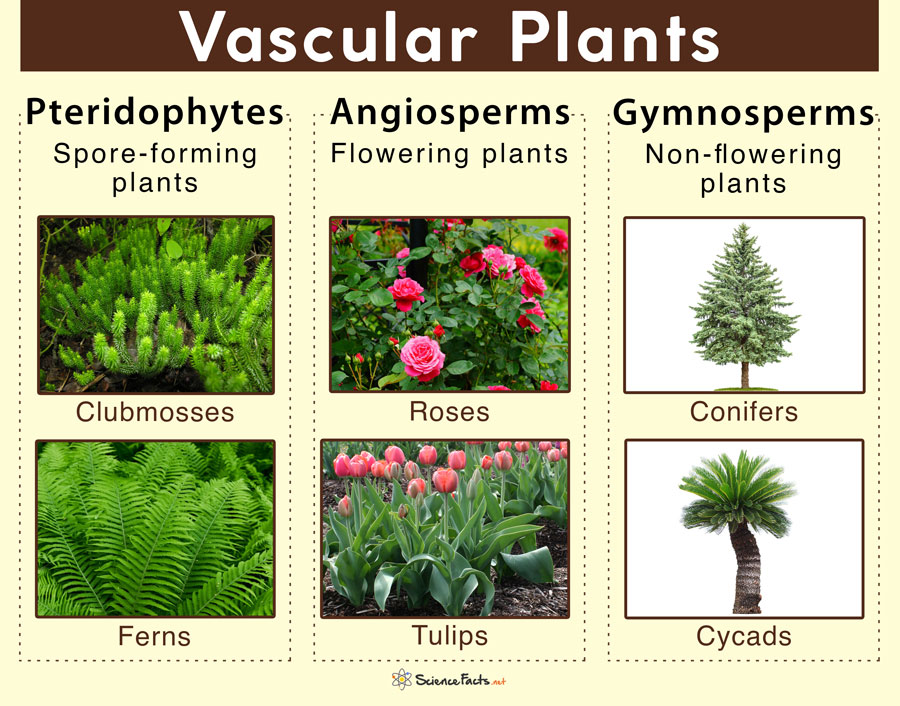Vascular Plants
Vascular plants (from Latin word ‘vasculum’ meaning duct), also known as tracheophytes (from Greek word ‘trachea’, a duct or tube), are land plants containing specialized vascular conducting tissues. They are found almost everywhere on earth. Common examples of vascular plants include trees, shrubs, grasses, flowering plants, and ferns.
The first vascular plants evolved during the mid-Silurian period, about 410 million years ago. They probably evolved from moss-like bryophyte ancestors.
Characteristics
Presence of Vascular Tissues
The main characteristics of vascular plants are the presence of two different vascular tissues – xylem and phloem. They consist of long, narrow cells arranged in an end-to-end pattern.
- Xylem transports water and associated minerals from roots to all plant parts. It consists of dead cells lacking end walls between adjacent cells. The sidewalls of the xylem are thickened with lignin deposition making them stiff and waterproof.
- Phloem transports food (sugar dissolved in water) from leaves to other plant parts for growth and storage. It consists of living cells with holes or tiny perforations separated by end walls.
Not only do vascular plants help in the uptake and movement of water and minerals throughout the plant, making it possible for the plant to grow larger. Through these vessels, plants can move necessary supplies farther at great heights within plants.
Presence of Leaves, True Root, and Shoot System
Apart from the vascular tissue system, almost all vascular plants contain leaves that connect sunlight to prepare their food using water and minerals. They also contain a true root and a shoot system.
Reproduction and Life Cycle
The reproduction in vascular plants can be sexual or asexual, involving alternation of generations between the diploid (2n) sporophyte stage and the haploid (n) gametophyte stage. The diploid stage produces spores, while the haploid stage produces gametes or sex cells. The lifecycle of vascular plants is dominated by diploid sporophyte generation.
Types
There are different types of vascular plants based on their type of reproduction.
Pteridophytes (Seedless Plants)
Vascular plants that reproduce through spores are called pteridophytes, including clubmosses and ferns. This type of vascular plant is often called seedless vascular plant.
Angiosperms (Flowering Plants)
They are vascular plants that reproduce by creating seeds. Angiosperms create their seeds inside fruits or flowers. Sunflowers, roses, tulips, maple trees, and elm trees are typical examples of angiosperms.
Gymnosperms (Non-Flowering Plants)
They are seed-bearing vascular plants that create cones to protect their seeds. Conifers, cycads, hemlocks, and gnetophytes are typical examples of gymnosperms .
FAQs
Ans. No, moss is a non-vascular plant.
Ans. No, alga is a non-vascular plant.
-
References
Article was last reviewed on Thursday, July 28, 2022




